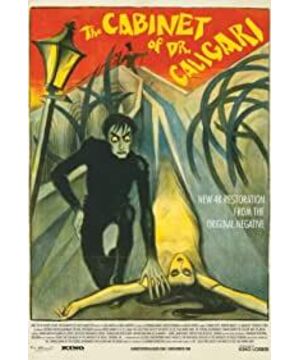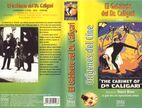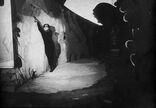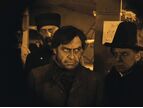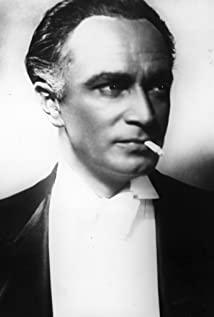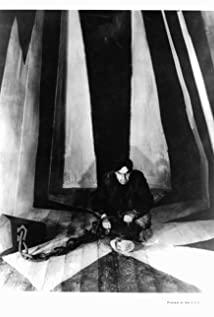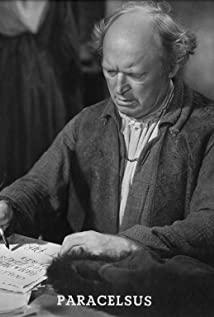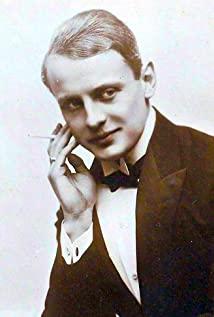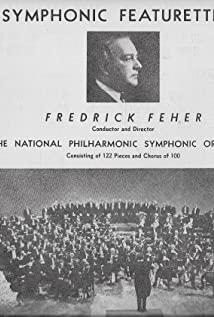Expressionism started in the 1910s. It first emerged in the field of painting, and then quickly developed in literature, drama, music and architectural art, and gradually formed a magnificent and extraordinary literary and artistic movement. After the First World War, the expansion of German industrial capital, the rapid rise in prices, the social anxiety and frustration of pessimism accompanied by high unemployment permeated, and the German film industry also suffered from social and economic double blows. Since then, German expressionist films were born, and Robert Wiene's film "Dr. Caligari" is a comprehensive presentation of the aesthetic characteristics of German expressionist films.
The most distinctive features of German expressionist films are nothing more than the extreme attention to and shaping of the characters' inner emotions, the gloomy description of the theme's meaning, and the exaggerated handling of the means of communication. The style presented in "Dr. Caligari" undoubtedly inherits the surreal abstract techniques of expressionist painting - "through unnatural forms and extremely distorted images of the world, the characters' inner fear and anxiety, love and Emotions of hatred." Its characteristics are first reflected in the setting of the art set, abandoning live-action shooting, and instead constructing a highly staged scene. Twisted, slanted and upside-down buildings, the zigzag floor that loses its level, the intertwined perspectives and windows with irregular geometric cuts all show a strong expressionist style. It is through such exaggerated and distorted environment shaping that the film hints at the deformity and machinery of the society at that time. For example, the high stools of the public officials in the film are so unconventional that they almost touch the ceiling, revealing the solidification of the supremacy of power in the consciousness; the chaotic beds highlight the artists' pessimism in the face of the general pessimism in Europe. A kind of inner confusion and contradiction. In the design of light and shadow, "Dr. Caligari" is also very expressive and dramatic: it does not use natural light effects, but relies entirely on artificial lighting, and the contrast between the characters and the background is extremely high; the contrast between light and dark is emphasized, creating a huge projection on the free wall. Shadows, and high-contrast, high-contrast hard light to accentuate the distortion and distortion of the characters. For example, when creating the character Shezar, the lighting engineer used the side backlight projected on the facial features to exaggerately highlight the contour shadows of the eyes and cheekbones, creating a terrifying distortion effect.
In the setting of the characters, "Dr. Caligari" also shows an expressionist characteristic technique to highlight the "alienation" of people. For example, Dr. Caligari itself is a symbol of crazy authority, with messy hair. , old-fashioned black robes and metal disc eyes all highlight the exaggerated and curious qualities of expressionism. In terms of performance, the film also expresses the "alienation" of the characters with a bizarre and exaggerated theatrical performance style - in the modern society where industry is supreme and science is long live, people are physically oppressed into mechanized tools, and spiritually also Full of fear and anxiety like a sick patient.
Although the development history of German expressionist films is very short, the visual style shown in them has greatly influenced the development of world films in the future, creating a precedent for horror films. Linear narration, exaggerated performance style, vision of sick characters and other presentation methods are also widely used in crime films, robber films and other genres, becoming one of the indispensable methods to reflect the distorted mental state and fear of characters. . At the same time, the motifs of expressionism about tyrants, paranoia, mental patients, etc. have also become the object of repeated pursuit in the later period of German films. In today's China, expressionism has also penetrated a lot. For example, in Jiang Wen's "Let the Bullets Fly", the formalized goose city and the blurred character background, the unconventional and abnormal story atmosphere and exaggerated and bantering performances are all in the Undoubtedly, they all show some influence of expressionism.
View more about The Cabinet of Dr. Caligari reviews


